#new dinosaur species
Text
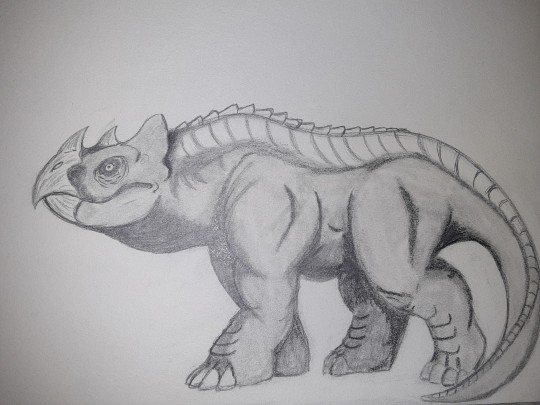
Made a new dinosaur
It's called titanosceratops
It's related to Triceratops species
#fan art#artwork#pencil#new dinosaur species#dinosaur#triceratops#evolved dinosaurs#evolution#dinosaurs#prehistoric reptile#prehistoric creatures#prehistoric
31 notes
·
View notes
Text
Not art related but OMG theres a new dinosaur and I want one. Ill take your entire stock

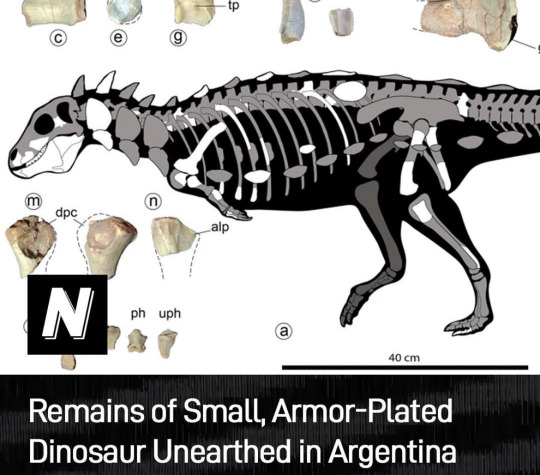
Just wanted to share
16 notes
·
View notes
Photo
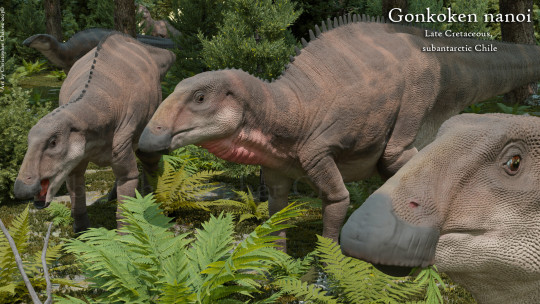

Chilean paleontologists have released their findings on a new duck-billed dinosaur named Gonkoken nanoi, which inhabited Chilean Patagonia in the late Cretaceous, in the late age of the Dinosaur, approximately 70 mya.
The name Gonkoken nanoi means similar to koken or swan in Tehuelche language, the indigenous people that inhabited the region where this species was found, and nanoi in honort to Mario “Nano” Ulloa, who helped during expeditions. It is estimated that it could have measured between 3.5 and 4 meters in length and weighed between 600 kilograms and one ton.
Chilean Patagonia could have been a refuge for these primitive forms of hadrosaurs, which would have migrated to the Southern Hemisphere long before more advanced forms, and it is believed these hadrosaur may have even reached Antarctica, when it was connected to South America.
3D Reconstruction by Christopher Chávez
Reference (Open Access): Alarcón-Muñoz et a., 2023. Relict duck-billed dinosaurs survived into the last age of the dinosaurs in subantarctic Chile. Science Advance
#new species#dinosaur#hadrosaur#Gonkoken nanoi#sciblr#science blr#science#biology#archaeology#fossil#gonkoken
530 notes
·
View notes
Text
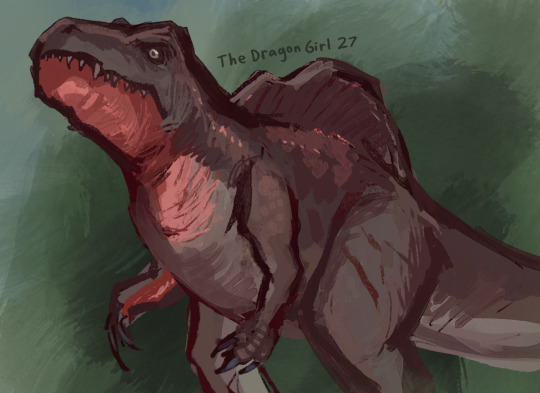
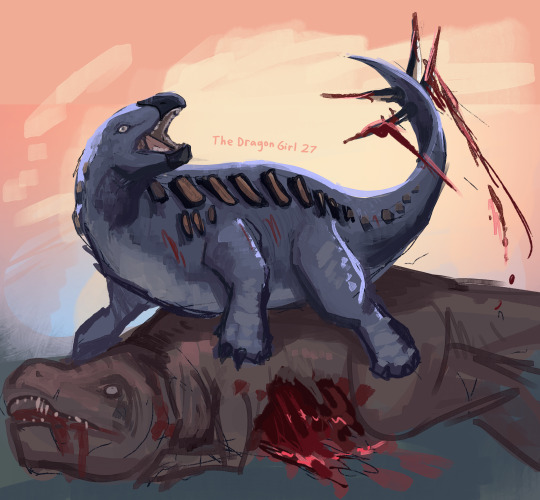
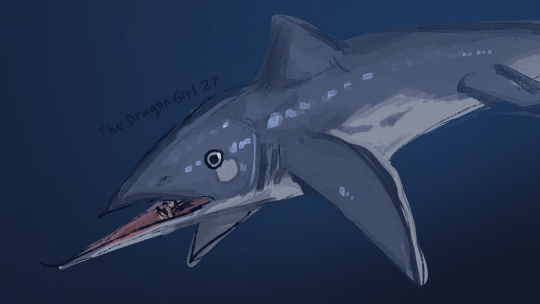

flocking drawings!!
Young Altispinax preparing to do a mating display
Thyreosaurus slaying a Theropod
Ornithoprion just swimming round
Mama Mapusaurus bringin home a Chakisaurus carcass for her daughter
#paleoart#paleostream#Altispinax#Thyreosaurus#Ornithoprion#Mapusaurus#Chakisaurus#theropod#stegosaurus#shark#dragon draws creatures#as for the unamed theropod in the Thyreosaurus drawing wikipedia says that there were theropods in the same formation#but there isn't much info beyond “they sure were there indeed”#or even like the specific species so like I drew the most generic theropod like default skin ass creature#so the scale might be innacurate#jokes on you Thyreosaurus is a newly discovered dino (like 2 weeks ago as of now) so that drawing will be inaccurate no matter what i do#or we can just say its a juvinile#wake up babe new dinosaur dropped#tw blood
79 notes
·
View notes
Text
A new avialan theropod from an emerging Jurassic terrestrial fauna
Published 6th September 2023
A new species of avialan therapod, Fujianvenator prodigiosus, thought to be one of the stratigraphically youngest Jurassic avialan from the Tithonian age of Zhenghe Fauna locality, China.
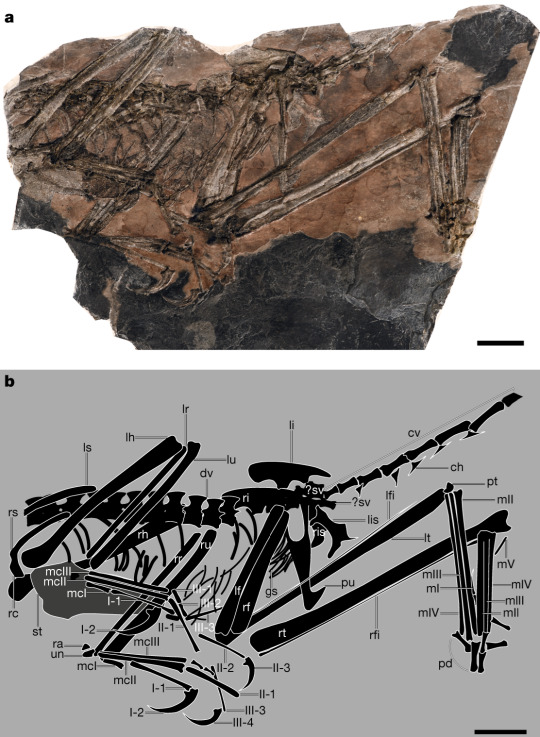
Fujianvenator prodigiosus holotype and detailed line drawing
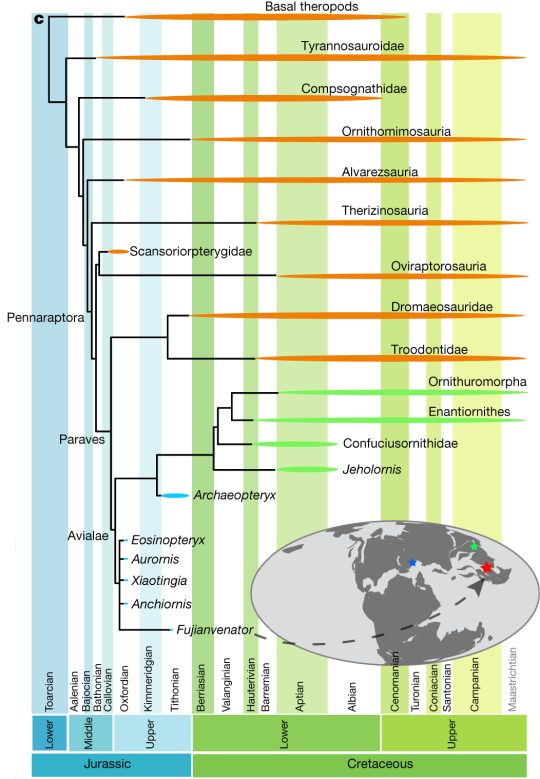
Fujianvenator prodigiosus phylogenetics

Life reconstruction of Fujianvenator prodigiosus, art by Chuang Zhao
source:
203 notes
·
View notes
Photo

12/31/22 Yi Qi
#daily dino#happy new year#happy new year's eve#dinosaur#dinosaurs#paleoart#species: yi qi#all finished!#whos your favorite lil guy?#my art#daily art
289 notes
·
View notes
Text
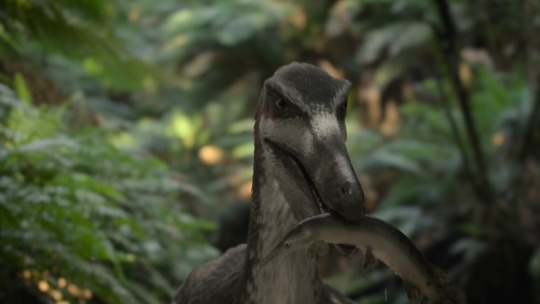


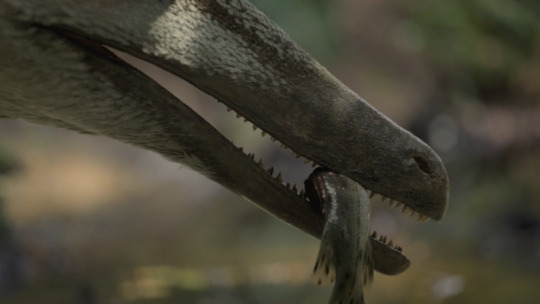
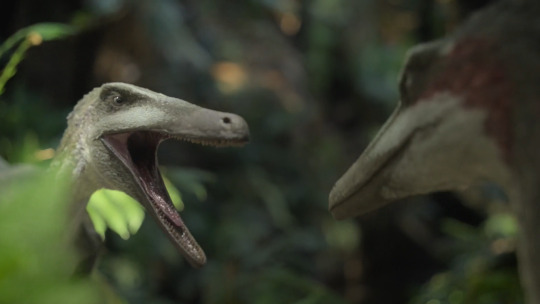

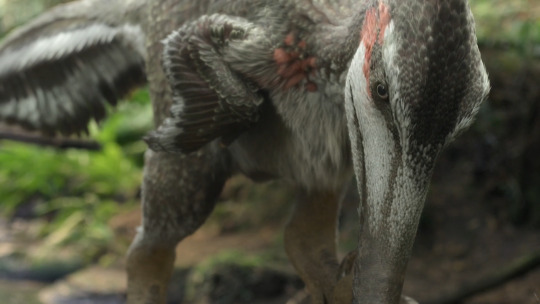
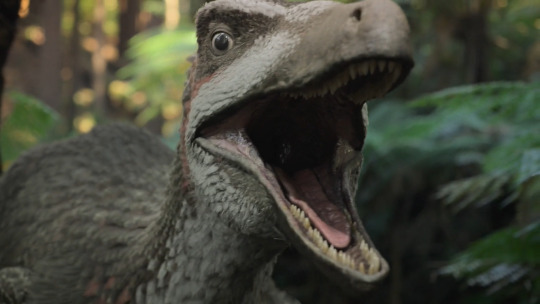

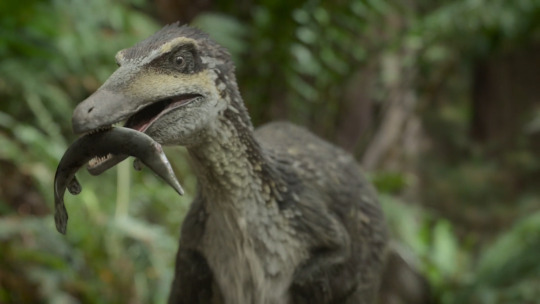
Life of our Prehistoric Planet: Austroraptor cabazai.
#prehistoric planet#prehistoric planet 2#austroraptor#dinosaurs#raptors#mine#easily my favorite new species this season the most menacing feathered raptors in any media so far#q
77 notes
·
View notes
Text
So a new species of dinosaur was just discovered and uh……. They named it Gremlin. Gremlin slobodorum…….
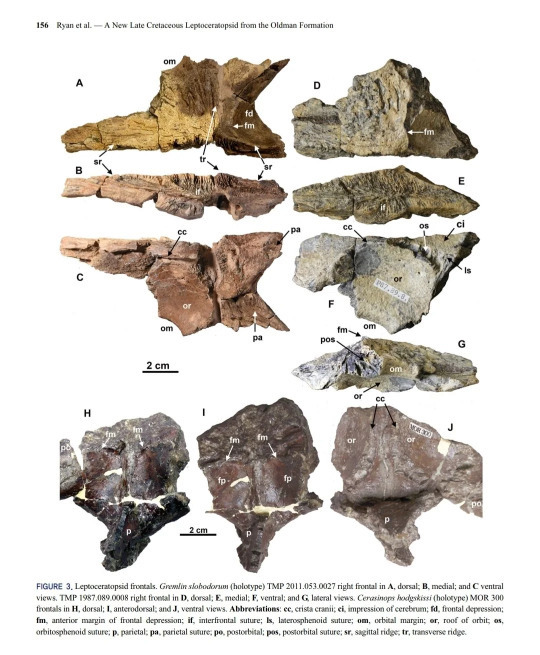
So Gremilin slobodorum is a species of leptoceratopsid ceratopsian dinosaur that lived during the Campanian stage of the Cretaceous period around 77 million years ago. Its fragmentary remains were first found in the Oldman Formation in Alberta, Canada and were originally thought to have belonged to a different genus of small ceratopsian called Cerasinops since their remains have been found in rock layers around that same age.
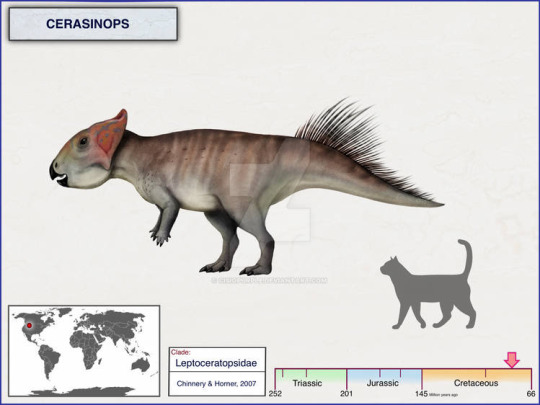
(Cerasinops compared to a modern house cat. Art by cisiopurple on Deviantart)
However, it was just recently discovered to be a completely new genus and so it was given the name: Gremlin slobodorum. The genus name “Gremlin” obviously refers to the mischievous mythical creature while the species name “slobodorum” is in honor of Ed and Wendy Sloboda who were both involved in the discovery of the holotype specimen.
If I’m being honest I don’t really like the genus name of this dinosaur. Like I’m all for extinct creatures having names inspired by mythology but just calling it Gremlin feels lazy in my opinion. Like it does look like a Gremlin but maybe Gremlinsaurus or Gremlinceratops would’ve been better names. But despite its uncreative (in my opinion) name I still think it’s a pretty cool dinosaur and can’t wait for more paleo art of this guy to start popping up. Also, no hate to the people who named this genus or if you like the name. I just wish it wasn’t just called Gremlin. Who knows maybe the name will grow on me.
#paleontology#dinosaur facts#new discoveries#new species#new dinosaur#animals#science#dinosaur#gremlin#gremlincore#unintelligible gremlin noises#nature facts#dinosaur love#i just want some way to be able to tell when people are talking about the dinosaur and when they’re talking about the mythical creature
29 notes
·
View notes
Text
The fossils were between 900–1,500 kilograms and five meters—about 15% of the size of the giant T. rex, which grew to 8,000 kilograms and nine meters or more.
At first Scientists thought this was an adolescent T-Rex
Measuring the growth rings in Nanotyrannus bones, the researchers showed that they became more closely packed towards the outside of the bone as growth was slowing. It suggests these animals were nearly full size; not fast-growing juveniles.
If you look at juveniles of other tyrannosaurs, they show many of the distinctive features of the adults. A very young Tarbosaurus—a close relative of T. rex—shows distinctive features of the adults. The Nano T-rex guy has its own distinct features
If the Nanotyrannus isn't a juvenile Tyrannosaurus, then why hasn't anyone ever found a young T. rex?
2 notes
·
View notes
Text
8 notes
·
View notes
Text
fuck jurassic world dominion its so fucking stupid. it would be so easy to have an original idea in this movie but they were so caught up in the cloning plotline that they accidentally cloned the entire first jurassic park.
#angel.txt#literally copied my discord messages but ARGHH#ITS JUST SCENES FROM THE 1ST MOVIE INTO THIS NEW ONE.#ROLLING MY FUCKING EYES.#nostalgia bait movie first. not a single original thought.#stupid ass fucking movies. 'we should live in harmony with the dinosaurs' girl those are all invasive species#that will majorly fuck the environment. what is fucking wrong with you.
3 notes
·
View notes
Text
A dinosaur obsessed 12 year old studied fossils and found a 69 million year old hadrosaur skeleton embedded in rock while hiking. A fisherman in Australia noticed tiny shrimp in his net that looked slightly different from the others and he sent a few specimens to biologists for testing. Turned out to be a never before described species, going unnoticed in a popular lake. I posted a pic ~here on tumblr~ of a weird parasite on a dead fish and a parasitologist found it and asked to report it as the species has never been seen in my area before.
There is so, so much out there we literally don’t even know. And the best way to find that stuff out is to be intensely curious about everything you see. You might not discover a new species but you absolutely will gain a deeper appreciation for the world around you.
44K notes
·
View notes
Text
Scientists Discover New Species of Dinosaur in Argentina
Scientists Discover New Species of Dinosaur in Argentina. #NewSpeciesofDinosaur #Ingentiaprima #news #sciencenews
New Species of Dinosaur in Argentina: Scientists have discovered a new species of dinosaur in Argentina. The dinosaur, named Ingentia prima, was a herbivore that lived during the early Cretaceous period, about 130 million years ago.
Ingentia prima was a large dinosaur, measuring about 10 meters long and weighing up to 10 tons. It was a sauropod, which means that it had a long neck and tail and…

View On WordPress
0 notes
Text
As promised, welcome to
Fun biology in TOTK’s designs
I'll keep this post updated as I go through the game. I'm going to skip the more general identifiable things like apples (they're based on apples!) because there are tons of more unusual species to talk about.
Overall, the really interesting thing I've noticed is that many of the more unique Earth-based lifeforms in TOTK are super ancient, like predating dinosaurs ancient, which is a really cool tie-in to the overall time-hopping plotline of TOTK. Specifically, they're found in the new areas (caves, depths) while the surface remains a bit more normal.
(There will be no plot spoilers in this post, and also I've barely gotten into the plot because I'm spending all my time wandering, so shhh no spoilers in the tags for like a month please.)
Most recent additions: More lilies, irises, wild ginger, spiny bones, pigeon extravaganza, plus added some more real photo comparisons to old stuff.
PLANTS
Bryophytes my beloved. Bryophytes are among the earliest land plants, waaaay predating flowers and even seeds. In our world, they’re small by necessity—they lack vascular systems to help move water around like other plants, so they have to stay small and moist (hence their frequency in caves in TOTK—though they do need some light in real life.)
In TOTK they’re quite large and I think that’s very sexy and art directors should give us big bryophytes more often
Anyway, there are three types of bryophytes: mosses, liverworts, and hornworts. First image pair is a moss, second is a liverwort. Those red-brown and palm-tree-like structures, respectively, are their reproductive structures.
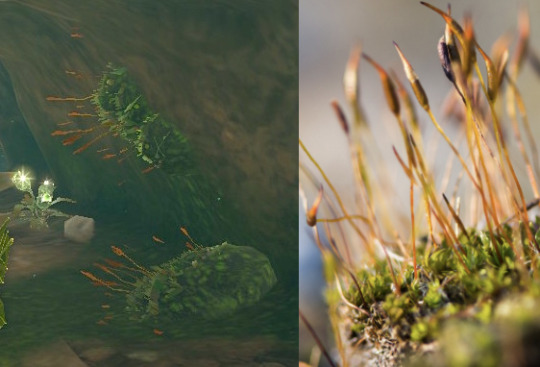

Real liverwort photo © Graham Calow, NatureSpotUK
Not yet spotted: Hornworts! Did they forget the third bryophyte sister :(
I think these next guys are probably lycopods (specifically club moss, which is not a true bryophyte moss, thanks science.) Very old, but vascular, so they're a bit more evolutionarily recent than bryophytes.

Real photo © Gloria Hanley Schoenholtz, virginiawildflowers
All the enormous curly-topped trees in the depths: Ferns! They curl like that until they unfurl. Another very old plant, though younger than bryophytes and lycopods.
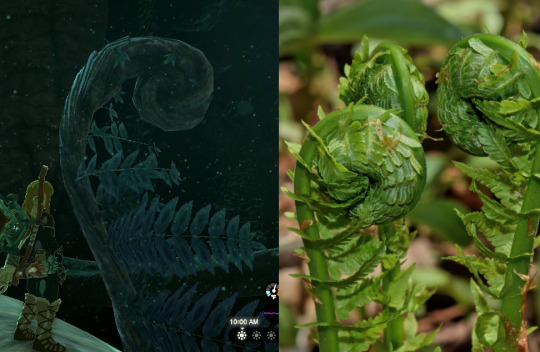
Real photo via The Cosmonaut, Wikipedia
Brightblooms and some of the other giant plants in the depths: Possibly based on a cycad? Again, a very ancient plant lineage. At this point, evolutionarily, they've developed seeds—that giant cone in the center is called a strobilus, and that's the seed structure.
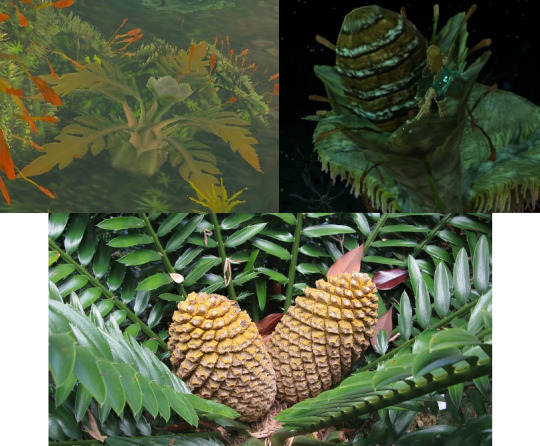
These next few plants are angiosperms, meaning they produce flowers. Angiosperms are a more recent evolutionary lineage—still many millions of years old, but it took a while to develop flowers as a reproductive tactic.
Sundelions (left) are a fun recolor of a lily. There are also some scenery lilies (right) in various places—there are yellow ones that spring up when you turn on a lightroot (which gives them literal and thematic connection to the surface) and several other varieties, including tiger lilies, throughout Hyrule. Fun note, the sundelions appear to only have 5 stamen, while other lilies in the game (correctly) have 6. Seems to be an intentional decision to make it a more distinct fantasy species.
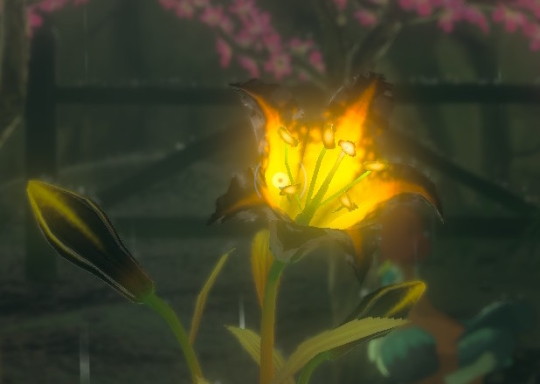
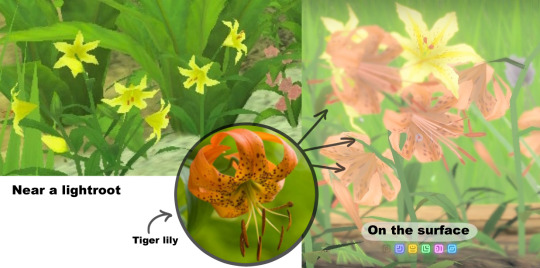
These next ones are Peruvian lilies/Alstroemeria, just used as a scenery plant but a very fun inclusion. Fun fact, not true lilies, so they're not deadly to cats like true lilies are.

Real photo © Dick Culbert, Wikipedia
Plum trees: These are also called out as plum trees in game! There's a journal in Kakariko that refers to the plum orchards.

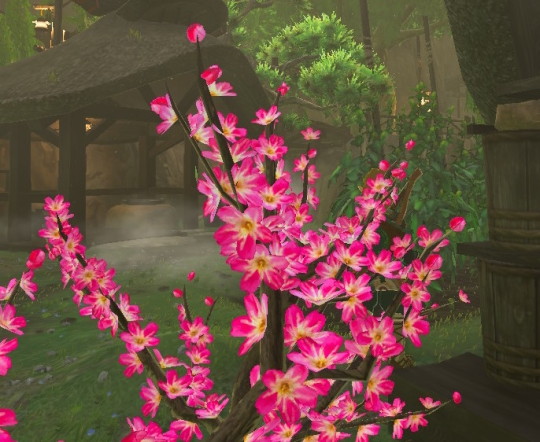
Okay I'm a little proud of figuring this one out. Bomb flowers blend a few botanical references. Superficially, the fruit resembles a type of seed pod called a capsule—specifically it's very similar to a poppy capsule. The little red thing in the center is a nice addition to resemble both a flower stigma (reproductive part that leads to the ovary) and a bomb fuse. Now, poppy capsules disperse their seeds via wind, but there are other plants who do explode their seeds outwards as a dispersal tactic! This is called explosive dehiscence.
There is one tree in particular called the sandbox tree, AKA monkey-no-climb or dynamite tree (yes, really.) Their capsules look more like little pumpkins, but are known for violently exploding when ripe—they can launch seeds at 150 miles per hour (250 km/h) and spread them roughly 200 feet (60 m) away. The photo comparison is a poppy capsule but you should def go look up dynamite tree videos.
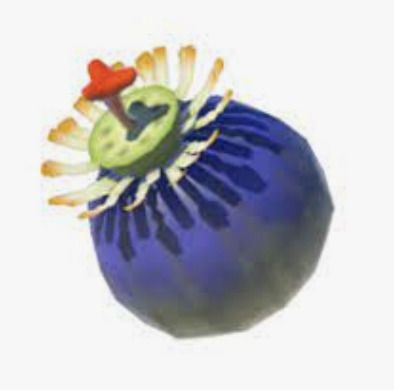
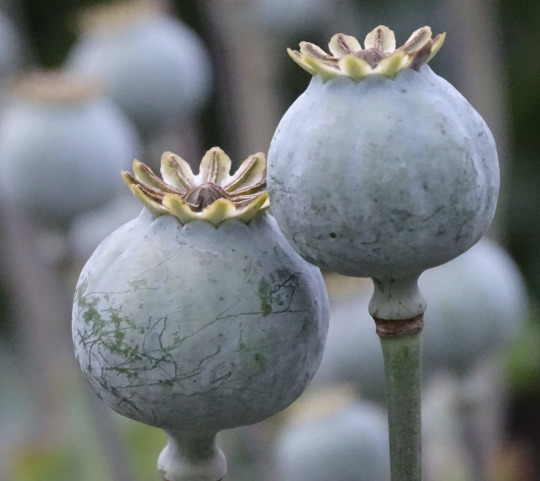
Real photo © PommeGrenade, pixabay
Fire fruits (and the other elemental fruits) grow on the same generic plant that looks kind of like it has grape leaves. Fire fruits resemble a specific botanical thing too though—the black netting is a papery calyx (part of the flower) seen in a nightshade genus, Physalis (golden berries, tomatillos, etc.)


Real photo © Helene Rogers, Alamy
I think this stuff is an Asarum, AKA wild ginger. I was actually puzzling over it until I walked past some today and went HEY
Not sure of the exact species but they're very green and heart-shaped and love being dense and low to the ground.
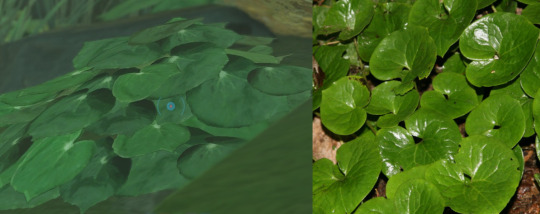
Real photo via David Stang, Wikipedia
Irises: Love irises, one of my favorite flowers and words, very happy to see them in game.

MISCELLANEA
Cup lichen! Lichen is not a plant, but a symbiotic structure of an algae + a fungi. Cup lichen is just a type of lichen formation that has a kind of vertical cup-like structure.
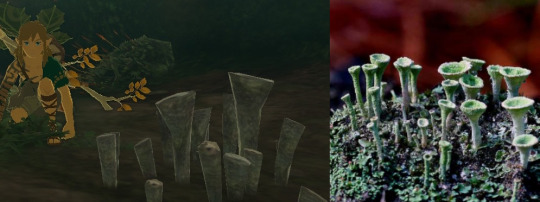
Real photo via Bernard Spragg
Geology crossover! Go look carefully at some of the whiter walls in the depths—they look like they have fossils of coral and other undersea hard-structured animals in them.
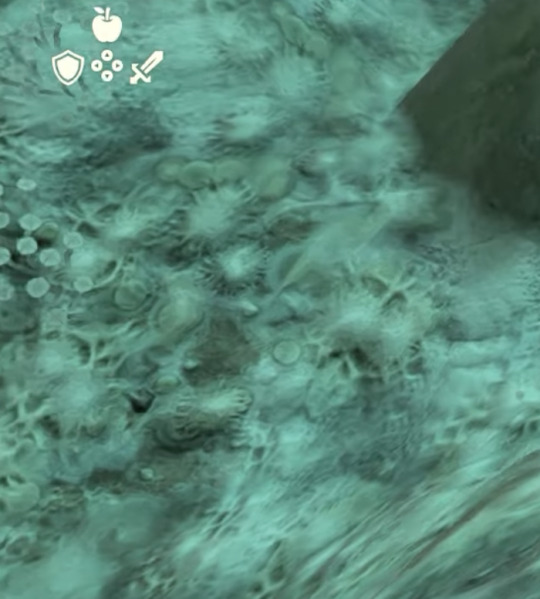
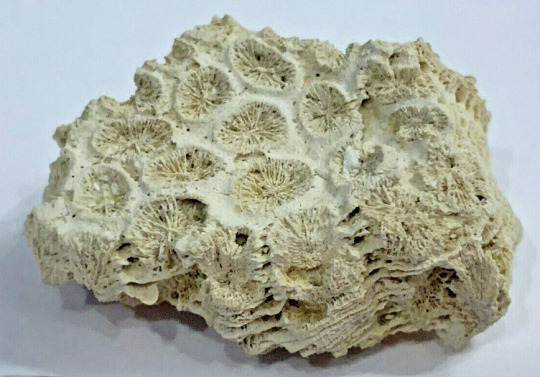
ANIMALS
Sticky lizards: Based on Diplocaulus, a very early (now extinct) amphibian! Their skulls are wacky. We're not sure whether the long sides stood out separately or were smoothly connected to the body by skin flaps, but the separate arrow-like shape is the most popular rendition.
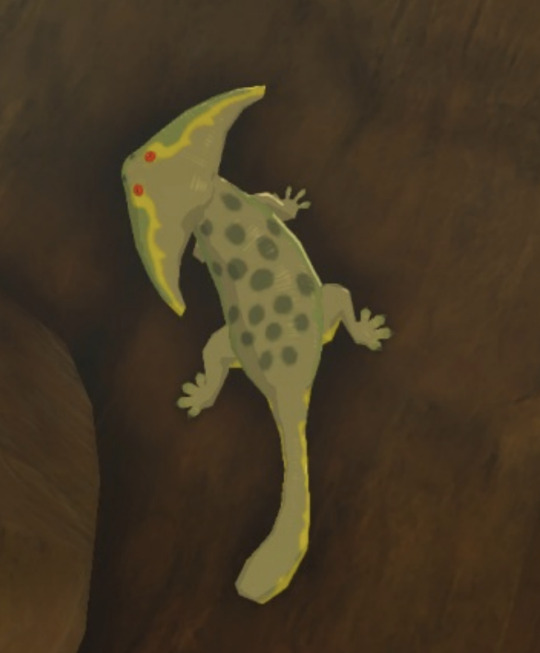

Deep firefly: Might be a stretch because it could just be a multi-winged fantasy critter, but I think the "wings" and antennae are very reminiscent of Anomalocaris, an ancient aquatic arthropod.
Update: Other folks in the notes/tags have pointed out that they're probably based on a cryptid that's especially popular in Japan: skyfish AKA rods! They show up in photos and people think they're an alien lifeform. In reality, they're an optical blur created when a lower quality video captures intermittent flaps of an insect's wings, leaving sort of a many-winged smear in the photo. Thanks to all who left info!
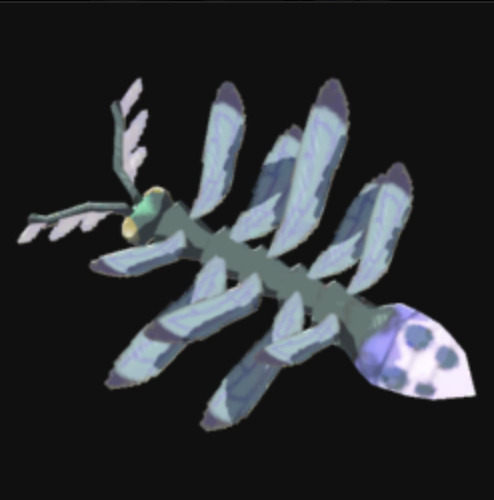
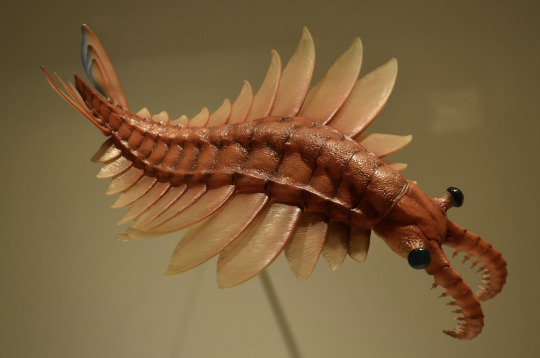

Little frox: Another stretch because it totally could just be a Hinox-like frog, but every time I see the little ones I can't help but think of like...Ichthyostega, Mastodonsaurus, Eryops, and other early amphibians. They were pretty hefty—little frox size or bigger—and had with little waddling legs. This is less "I think it's definitely this" and more "it makes me happy when I picture frox as primitive amphibians."


I haven't detailed many of the scenery animals around Hyrule because most are identifiable with the camera function—it'll tell you that a certain animal is a heron or porgy, for example, and those groups are real, even though the exact species is made up. But I think the pigeons are fun because they're all crested pigeons. Pink-necked green pigeons may have also been the inspiration for the color palettes on the wood and rainbow pigeons.
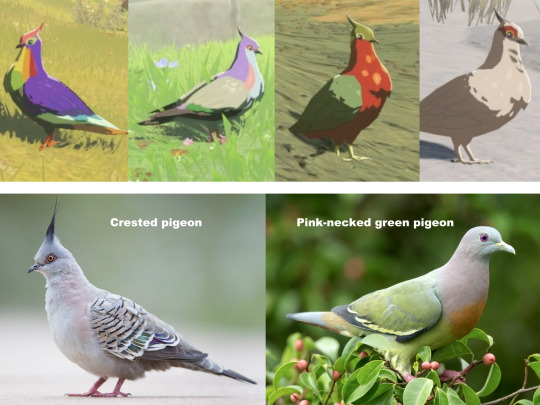
Both pigeon photos via JJ Harrison, Wikipedia
Spiny bones: Not a specific critter, but those spiny bones that you can find lying around Eldin Canyon are vertebrae—possibly from the same thing that left those big rib cages around? The top spike is the spinous process where muscles attach, the littler spikes on the side are the transverse and articular processes. The dark O in the center is the spinal cord.
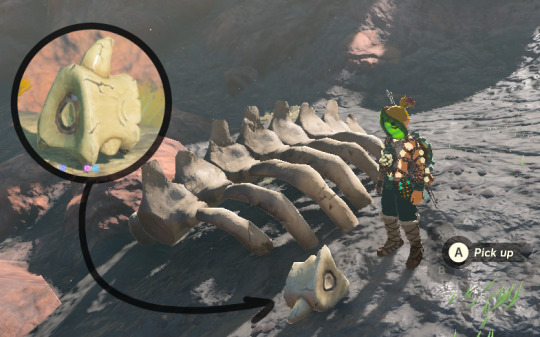
Also I made a friend who finally recognizes my purpose in Hyrule.

That's all I've got for now! Will add more as I keep playing.
#tears of the kingdom#totk#legend of zelda#loz#science fun#biology#lizard#plant#botany#image heavy#long post
7K notes
·
View notes
Text
A rebbachisaurid-mimicking titanosaur and evidence of a Late Cretaceous faunal disturbance event in South-West Gondwana
Published 30th October 2023
The description of a new titanosaurian sauropod, Inawentu oslatus, based on nearly complete remains from the Bajo de la Carpa Formation, Neuquén, Argentina. Inawentu oslatus shows remarkable convergent anatomical traits with rebbachisaurid sauropods, implying rapid speciation of the titanosaurs to fill the empty ecological niche left by the extinction of the rebbachisaurids.

Skeletal reconstruction and material of Inawentu oslatus
Source:
33 notes
·
View notes
Text
i'll be doing okay, enjoying life and such, but then i'll learn about some new horrifying war crimes and i'm reminded that humanity actually is irredeemable and this world needs to end
#personal#just wipe us out like the dinosaurs#clean slate let some new species evolve and give society a try again
0 notes